I recently looked again at the Turner Diaries and thought that perhaps I could analyse it using a corpus linguistic approach. The Turner Diaries has been a principle text for the extreme right for some years now, and as there are so many mentions of extremism in the media recently, it does seem appropriate to consider how such a text is constructed.
The above visualisation was made using IBM’s ‘Many Eyes’ software, which can be found at:
http://www-958.ibm.com/software/data/cognos/manyeyes/
By a quick glance, it is possible to see the central themes of the text being people, white, black, organization & system. However, I want to look at the text using Wordsmith Tools. Firstly, the word list:
As with many word lists organised by frequency, most of the words are function words, although I do find it interesting that we and our are so high on the list. However, if I scroll down the list looking for the most frequent lexical words, then a clearer picture of the contents of the book may be obtained.
The 20 most frequent lexical words are as follows:
system (252), organization (221), people (218), white (165), area (148), police (113), building (112), day (111), black (110), blacks 107), against (104), military (95), work (90), order (88), Washington (84), government (77), members (75), country (73), man (73), public (67).
It does appear that a principle semantic field of the text is related to ethnic groups people / white / black / blacks. Another semantic field appears to be related to the establishment military / Washington / government / public. There are words connected to a group organization / order / members.
Often a study of keywords can be more significant:
The fact that we and our have the highest levels of keyness appears to suggest that a principle discourse within the text is concerned with the construction and maintenance of the in-group.
If I look at the collocates of our and order them by levels of keyness, the following list is produced:
The majority of the words appear to be related to a form of struggle.
The collocates could also be organised by frequency, which produces the following:
As people collocates frequently with our, a look at concordance lines of this phrase might be insightful.
The concordance lines have been randomly select, although they do appear to indicate a semantic field of the victimisation and struggle of the in-group.
Perhaps this is a root of extremism; groups or ideologues within groups create a discourse of victimisation, which in turn leads individuals to believe that they must respond to such perceived injustice.
And finally a visualisation of chapter 1 using Gephi.
Quite interesting if you use a microscope!


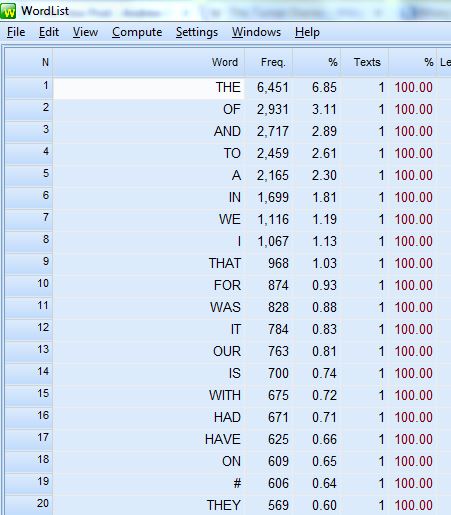
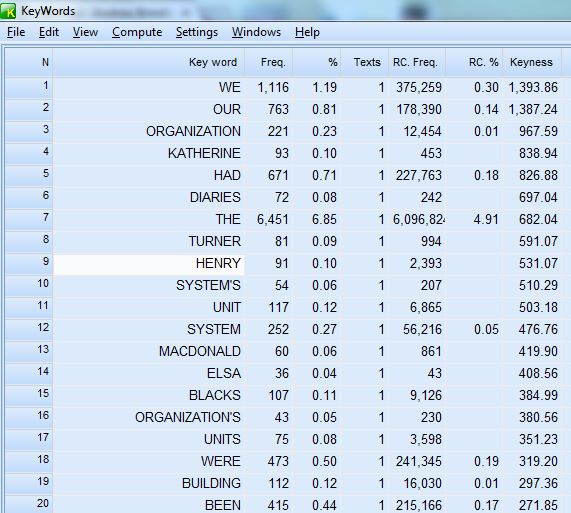
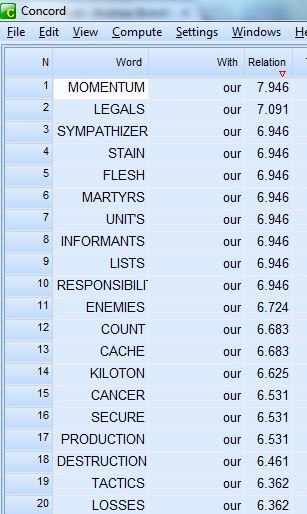
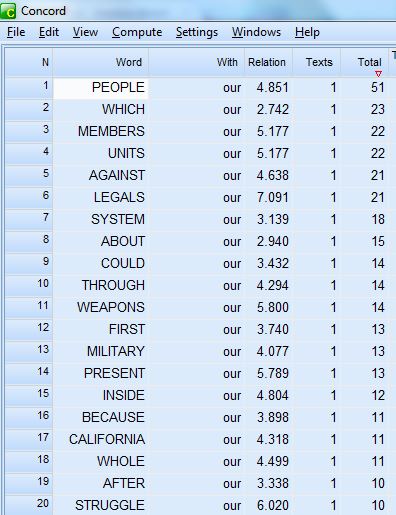
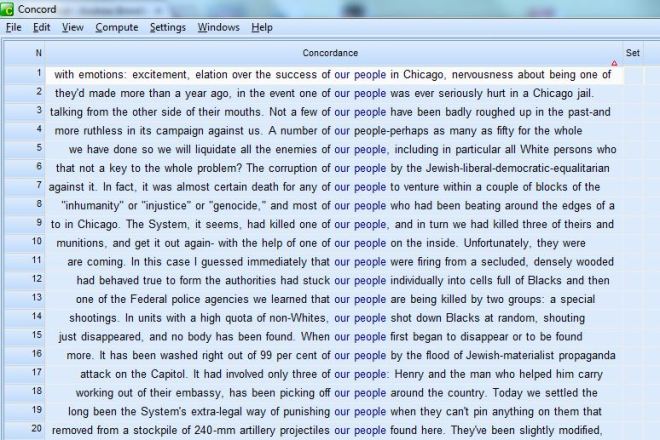
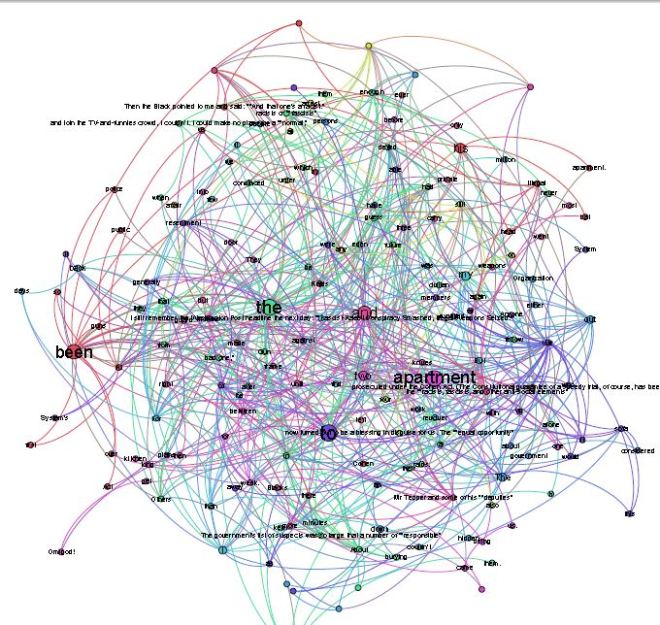
For a second opinion on calculating keyness: http://repository.edgehill.ac.uk/4196/